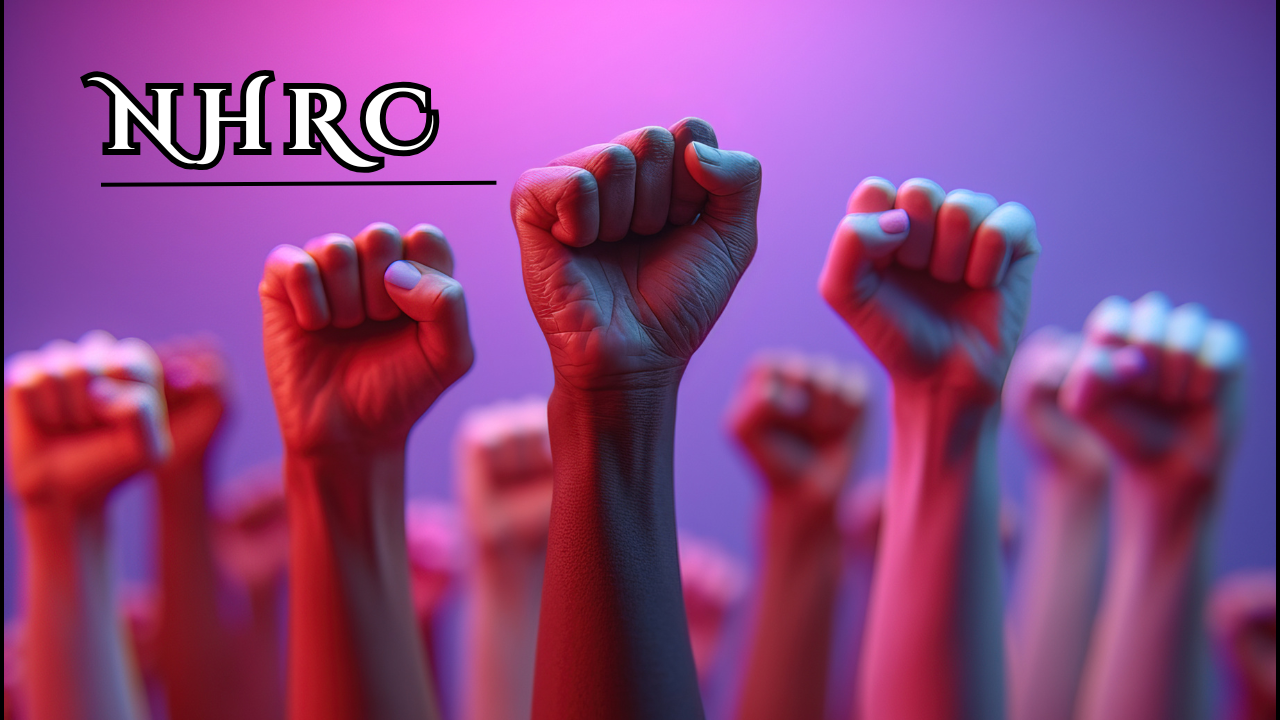NHRC
Context:
Taking suo motu cognizance, the NHRC has issued notices to the Delhi government and civic authorities after the death of a five-year-old who fell into an open drain, marking the fifth such incident recently.

About NHRC:
Human Rights:Human rights, as defined by the United Nations, are fundamental rights inherent to all human beings, regardless of race, sex, nationality, or religion. These rights include: Right to life and liberty., Freedom from slavery and torture, Freedom of opinion and expression and Right to work and education. The Paris Principles, adopted in 1993, outline the structure and functioning of National Human Rights Institutions (NHRIs). |
Establishment: The National Human Rights Commission (NHRC) was established as a statutory body in 1993 under the Protection of Human Rights Act, 1993.
- It functions as a watchdog for human rights, including protecting life, liberty, equality, and dignity.
- Composition: A Chairperson (a retired Chief Justice or a Supreme Court judge) and five members.
- Ex-officio members from various national commissions.
- Appointment Process: The Chairperson and members are appointed by the President of India, based on recommendations from a six-member committee.
-
-
- The committee consists of: Prime Minister (Chairperson), Union Home Minister, Leader of the Opposition in the Lok Sabha, Leader of the Opposition in the Rajya Sabha, Speaker of the Lok Sabha and Deputy Chairman of the Rajya Sabha 123.
-
- Tenure and Removal: Chairperson and members serve a three-year term or until they reach 70 years of age.
- They can be removed by the President for reasons such as insolvency or misconduct.
Powers and Functions of NHRCInvestigative Powers:
Monitoring Institutions: Conduct visits to jails and detention centres to ensure humane treatment. Legal and Policy Review:
Awareness and Collaboration:
Recommendations and Jurisdiction: While the NHRC’s recommendations are not binding, the government is required to report on actions taken in response. |
Key Intervention and Success of NHRC:
- Displacement and Rehabilitation: NHRC addressed displacement due to mega projects and disasters, in cases like the Kalinganagar incident (Orissa) and Narmada project protests.
- Violence and Conflict Resolution: It took action in major incidents, such as post-Godhra violence (Gujarat), Nandigram clashes (West Bengal), and police atrocities against tribals (Madhya Pradesh).
- Farmer Suicides: NHRC intervened in Maharashtra and Andhra Pradesh to address high suicide rates among debt-ridden farmers, pressuring governments for better relief measures.
- Healthcare for Adivasis: The commission focused on improving healthcare access in rural Adivasi communities, particularly in Odisha.
- Mass Cremations and Salwa Judum Violence: NHRC investigated mass cremations during the Punjab insurgency and human rights violations in the Maoist-Salwa Judum conflict in Chhattisgarh, ensuring compensation and reporting to the Supreme Court.
- Advocacy and Awareness: NHRC has advocated for the ratification of the Convention Against Torture and conducted awareness campaigns on food security, education, and healthcare rights, while engaging internationally to promote human rights.
Failures of the NHRC:
- Lack of Enforcement Power: The NHRC’s recommendations following the 2013 Muzaffarnagar riots were not effectively implemented.
- Delays and Bureaucracy: The commission faced criticism for its slow response to mob lynching cases during 2017–2018.
- Over-reliance on Government Agencies: In the 2009 Manipur custodial violence case, the NHRC relied heavily on police reports, affecting the independence of its investigations.
- Limited Jurisdiction under AFSPA: The NHRC was unable to take action in the 2000 Pathribal fake encounter case due to restrictions under the Armed Forces Special Powers Act.
- Resource Constraints and Case Backlogs: In 2020, the NHRC reported over 30,000 pending cases, including delays in addressing the 2016 Una Dalit atrocities.
Way Forward
- Revamping Structure: A complete overhaul is recommended to make the NHRC more effective as a watchdog for human rights violations.
- Justice Verma Committee (2013) suggested enhancing the powers of the NHRC to ensure more effective monitoring and enforcement of human rights.
- Enforceability of Recommendations: Making NHRC’s decisions enforceable would significantly enhance its authority and impact.
- The Law Commission of India Reports have suggested a need for a more proactive NHRC that can effectively address contemporary human rights challenges.
- Diverse Membership: Including civil society members and human rights activists in the commission could ensure a broader perspective on human rights issues.
- Independent Cadre Development: Establishing an independent cadre of experienced staff would improve operational efficiency and expertise within the commission.
- Legal Reforms: Amending outdated laws could enhance transparency and accountability in human rights protection.
Conclusion
The NHRC plays a crucial role in addressing human rights violations in India. While its recommendations are not enforceable, it continues to influence human rights policies and advocate for justice.
Subscribe to our Youtube Channel for more Valuable Content – TheStudyias
Download the App to Subscribe to our Courses – Thestudyias
The Source’s Authority and Ownership of the Article is Claimed By THE STUDY IAS BY MANIKANT SINGH




